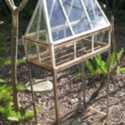 A Wardian Case for Gardeners
A Wardian Case for GardenersAt an unplanned stop at a yard sale - I happened to just be driving by - I spotted this piece and immediately knew I wanted it, even though in our climate there is not much need for a Wardian Case.
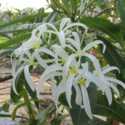 Plumeria - the Underrated Species
Plumeria - the Underrated SpeciesIt is almost irresistible to wallow in the beauty of the many cultivars of Plumeria rubra. The colors, sizes, and shapes of the blooms vary enormously and make it very tempting to try to collect them "all" (ask me how I know!) There are a number of Plumeria species that are underrated, however, and yet they have so much to offer.
 The Flamboyant 'Flamboyant'
The Flamboyant 'Flamboyant'Delonix regia is a tree known as "Flamboyant" in certain parts of the Caribbean, and it is easy to see how it got this name.
 Gloriosa Lily
Gloriosa LilyGloriosa superba is a striking plant, and the only climbing lily in existence.
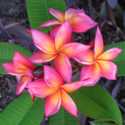 Plumerias - Can You Grow Them?
Plumerias - Can You Grow Them?Plumerias are large trees in their native habitat that can grow up to 20 feet tall. These days, however, they are being bred much smaller and more compact, allowing more regions of the world to enjoy these beauties.
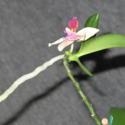 Glossary Tip - Keiki
Glossary Tip - KeikiKeiki - literally means 'baby' or 'child' in Hawaiian. In horticulture, it is used to refer to a baby plant produced by the parent, usually in orchids, which is an exact clone of the parent plant.
 Planting a Rootbound Plant
Planting a Rootbound PlantWhen you have a root-bound plant in a pot, give it a nice long soak in a tub of water before trying to remove it from its pot, so you don't end up breaking off the majority of the roots.
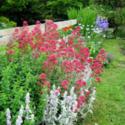 Planting in Clay
Planting in ClayIf you have heavy soil (clay, for instance), it is best to make a small mound of good top soil in which to plant your plants, so they don't get waterlogged and rot.
 How To Fertilize a Potted Plant
How To Fertilize a Potted PlantTo fertilize a potted plant, rather than sprinkle the fertilizer on top, stick your finger about halfway in the soil along the edge of the pot and pour some fertilizer in the hole, then cover it up. The roots will find their way to the plant food, and weeds that might try to grow on the top of the soil will not 'steal' all the nutrients. I use this method with timed-release fertilizer, which is particularly sensitive to sunlight, so it is much more effective when covered.
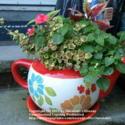 Vermiculite or Perlite?
Vermiculite or Perlite?Should you use vermiculite or perlite? They have a lot of the same properties, although their composition is very different. I suggest using Perlite to amend any type of soil to create a lighter, more porous mix. Perlite holds water but doesn't become soggy. Vermiculite is best used to start seeds and grow seedlings on.
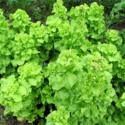 Planting Salad Greens
Planting Salad GreensWhen planting seeds for salad and other edible greens, consider planting one row per week during the growing season. That way, you ensure that you have fresh young salad to harvest every week throughout the season.
 Planting Seeds and Bulbs
Planting Seeds and BulbsA good rule of thumb for planting seeds or bulbs is that you should plant them the same depth as the size of the seed or bulb.
 Frugal Seed Starting Mix
Frugal Seed Starting MixYou can buy a 'soilless mix' to start seeds, but doing so can be expensive. It is perfectly OK to 'sterilize' your potting soil yourself in a regular oven. Be careful! Do not let it get too hot - 30 minutes at 180 to 200 degrees is ideal.
 Winter in South Florida: Grow Veggies
Winter in South Florida: Grow VeggiesYou'll be very surprised to hear that we grow most of our vegetables in winter here in the warm South.
 Lightweight Rocks
Lightweight RocksLike the look of rocks in your landscape but have a bad back? No young person around to help you move the giant boulders? Consider buying 'feather rock', so called because it is 'light as a feather' (it is a very porous type of lava rock). It is very attractive and a sizable stone can be easily picked up.
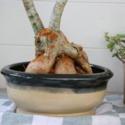 Repotting Adenium
Repotting AdeniumWhen repotting an Adenium, raise the plant an inch (or more depending on size) from its previous height, to help the caudex develop. Cut off any of the tiny roots that are above the (new) surface with a sharp knife, and dust the cuts with cinnamon to prevent rot.
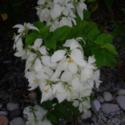 Potted Plants Need Extra Care!
Potted Plants Need Extra Care!When buying potted plants to put out in your garden, be sure to either transplant them as soon as possible, or remember to keep them well watered. Plants in pots dry out faster than in the ground!
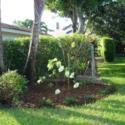 Observe Your Environment Before Selecting Plants
Observe Your Environment Before Selecting PlantsWhen moving to a new area, you probably are itching to start planting your yard. I recommend driving, riding a bike, or walking around your new neighborhood for a while to see what grows there in order to not make costly mistakes.
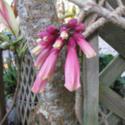 Prune at the Right Time
Prune at the Right TimeBefore you start pruning a bush, vine or tree, look up whether the plant blooms on old or new growth. This will determine when is the best time to prune to optimize blooms! You don't want to prune in the spring if your plant blooms on last year's growth.
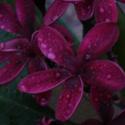 In Photography, Timing Is Important
In Photography, Timing Is ImportantIf you want to take pictures of your flowers, do it just before sunset to get the color just right. In bright sun the color bleaches out.
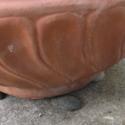 Pots with Feet
Pots with FeetFor plants that require good drainage in pots, such as Adeniums (Desert Roses), for example, there are little terracotta feet available to put under the pot. They are not cheap, but there are other choices.
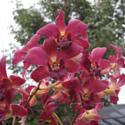 Garden Tour - Dutchlady1
Garden Tour - Dutchlady1I don't have a Garden; I have a third of an acre in an older part of Naples, Florida, which holds a house, a pool, and hundreds of plants, mostly Plumeria. After they first were stashed haphazardly here and there, wherever there was a space, I am slowly pulling it all together into a more coherent whole. As every gardener knows - this is a work in progress!
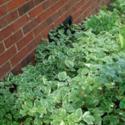 A Quick Trade Tip
A Quick Trade TipThrifty tip: Everyone has a few plants that multiply like crazy. Get together with your neighbors to swap for their surplus, or offer them in trade on your local freecycle or craigslist forums.
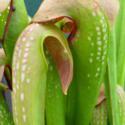 Don't Water Plants with Chlorinated Water
Don't Water Plants with Chlorinated WaterWhen watering a Pitcher plant (Sarracenia or Nepenthes) it is best to use rain water or distilled water. They don't like the buildup of salt and minerals that are present in most tap water.
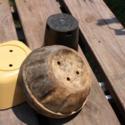 Drain Holes Equal Happy Plants
Drain Holes Equal Happy PlantsWhen planting in a pot, make sure the pot has a drain hole. Plants don't like to sit in water.
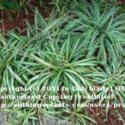 Grow Your Spider Plant Outdoors
Grow Your Spider Plant OutdoorsIf you live in zone 9 or 10, you can grow the 'Spider Plant' (Chlorophytum comosum) outdoors. This plant, which is native to South Africa, makes a wonderful ground cover. Just start with one and watch the baby plants spread around the mother. They can easily be moved if they get into areas where you don't want them.
 Don't Clog the Drain Hole
Don't Clog the Drain HoleWhen planting in a pot, always make sure to cover the drain hole loosely with gravel or (my favorite) pot shards. This stops the drain hole from becoming clogged.
 How To Repot a Cactus
How To Repot a CactusTo repot a cactus or other spiky plant, wrap it carefully in a washcloth or towel to minimize breakage to the spines and injury to your hands! You will be able to handle it easily this way. You may need to use some tape to hold the cloth in place.
 Double Check Plant Labels for Best Results
Double Check Plant Labels for Best ResultsWhen researching plants to grow in your yard, look up their requirements for sun exposure and water needs for maximum success!
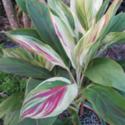 More Plants for Less Money
More Plants for Less MoneyWhen buying a potted plant at one of the big box stores, check to see how many plants are actually in the pot! To make a potted plant look fuller, they often will plant three close together. It's up to you to split them up, plant them a few feet apart, and VOILA: three plants for the price of one. I find this true for Crotons, Hibiscus, Cordyline, and others.
 Poinsettia and Light
Poinsettia and LightWhen planting the Christmas Poinsettia out in your yard after the holidays, make sure there is no light (like a porch light or street light) shining on it. In order for it to get the wonderful colored bracts next season, it needs a period of complete darkness.
 Save Soil When Using Big Pots
Save Soil When Using Big PotsWhen planting in a very large container or pot, first fill to one third with styrofoam pieces or peanuts before adding the soil. The roots will find their way around the material, and the pot will be less heavy and easier to move around.
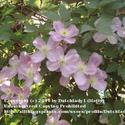 Benefits of Vines Growing on Your House
Benefits of Vines Growing on Your HousePlanting a vine against the side of your house will help keep that wall cool in the summer (by shading it) and warm in the winter (by giving it a pocket of air to insulate, and reduce wind chill).
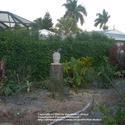 Tree Stumps as Garden Elements
Tree Stumps as Garden ElementsIt is always sad to have to get rid of a mature tree. When you do have to take that step, consider leaving a stump about 3-5 ft high to use as a pedestal for a pot or other art object to make a feature.